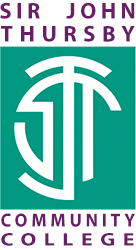Topic 2 Year 8 physics
| Physics | |||
| Topic | Electromagnetism 2 | ||
| No of lessons | 10 | ||
| When is it happening | Term 8 Year 2 | ||
| What will students learn | Students must be able to predict the behaviour of two magnets when they are brought together. How the earth’s magnetic field is used in navigation. How to draw diagrams of the field lines around magnetic materials. How magnetic materials will behave if placed in a magnetic field and examples of magnetic materials. Explain how an electromagnet generates a magnetic field and the factors which effect the strength of the magnetic field. The use of electromagnets compared to permanent magnets for a variety of uses. How electromagnets are used in bells, circuit breakers, relays and loudspeakers. | ||
| Key Knowledge that students should know at the end of 'Topic' | This is the knowledge that students will meet for the first time in this topic | Students should be able to apply knowledge of magnets to navigation using the earth’s magnetic field. Draw diagrams of the field lines around magnetic materials, showing the direction and strength of the magnetic fields using both iron filings and compasses. Be able to predict the pattern of field lines and the force around two or more magnets placed near each other and how magnetic materials will behave when placed in a magnetic field. That iron, nickel, cobalt and steel are magnetic materials and be able to explain why they are magnetic in terms of domains. Students need to be able to explain how electromagnets work and how they generate magnetic fields. The factors which effect the strength of the magnetic field generated by an electromagnet including the role of the solenoid, potential difference, number of turns on the coil and the presence of the iron core. Evaluate the use of electromagnets compared to permanent magnets for a variety of uses including separating steel waste, generating movement in DC motors and in loudspeakers. They should also be able to explain how bells, circuit breakers and relays work in terms of electromagnets. | |
| This is knowledge that students may have met before but will need to deepen their understanding | From KS2- magnets attract or repel each other and attract some materials and not others. Some materials are magnetic namely iron, nickle and cobalt. Magnets have two poles that magnets will attract or repel based on which poles are facing. From Electromagnetism Part 1 (year 7 term 3)- how to set up a simple circuit, definitions of current, potential difference, circuit symbols. | ||
| Key Skills that students should be able to demonstrate at the end of 'Topic' | This is the skills that students will meet for the first time in this topic | How to draw magnetic field lines using iron filings and compasses. How to set up an electromagnets and to change its strength. How to use a compass. | |
| This is skills that students may have met before but will need to develop | Setting up a simple electric circuit. | ||
| Key vocabulary that students should know and understand |
Permanent magnet, attractive force, repulsive force, poles, navigation, compass, magnetic field, field lines, iron filings, Iron, nickel, cobalt, steel, atoms, attraction, repulsion, electromagnetism, movement, solenoid, iron core, steel waste, interval, |
||
| The Big Question | Magnets; How can you make one and why would you want to? | ||
|
Key questions that students should be able to answer at the end of the 'Topic' |
What happens to permanent magnets when they are placed close together? | ||
| What does a migrating goose and a mountaineer have in common? | |||
| How can we see magnetic fields? | |||
| Why is repulsion the true test of magnetism? | |||
| How can we make a magnet that can turn on and off? | |||
| How can we make an electromagnet stronger? | |||
| What are electromagnets used for? | |||
| Fire alarms and electric cars; what's the connection? | |||
